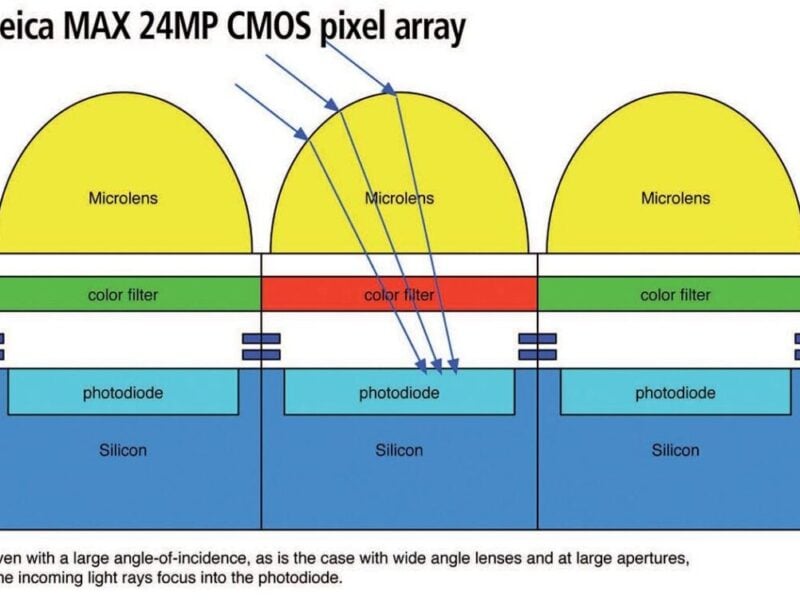
High-dynamic-range CMOS image sensor delivers 24Mpixels across a 36x24mm area
The new “Leica M” digital camera launched at Photokina 2012 incorporates the full-custom CMOSIS “Leica MAX 24MP CMOS Sensor” featuring 24 Megapixels across an active sensor area of 36x24mm², corresponding to the full-frame 35mm format. The sensor is the first milestone in a long term, strategic cooperation between Leica Camera AG and CMOSIS.
The custom-designed sensor chip, counting 6,000 x 4,000 pixels on a 6×6 µm² grid across the active area of 36×24 mm², is made by STMicroelectronics in Grenoble, France, using 300mm wafers in their IMG175 CIS technology. STM’s 110nm frontend and 90nm backend CIS technology with copper metallization was originally developed for CMOS image sensors with 1.75µm² pixels for mobile phones and other consumer applications. The large die size, larger than the reticle size, requires the use of one-dimensional stitching.
The imager for the “Leica M” is based on a 6×6 µm² pixel size, yielding a linear full well capacity of over 40,000 electrons and a linear dynamic range close to 76dB. Pixel data are digitized by patented low-power, high-speed 14-bit column AD converters. The sensor features an electronic rolling shutter with global reset and noise cancellation through both analog as well as digital correlated double sampling (CDS) resulting in low temporal and spatial noise and non-uniformities.
Special care was taken in the sensor development to reduce crosstalk between neighboring pixels for a wide range of incident light angles.

The sensor reduces spatial crosstalk by its very small distance between color filters and photodiodes. This thin optical stack is optimized for an efficient light coupling into the silicon. Microlenses with a strong curvature and high top height focus the incoming light rays in the center of each pixel’s photodiode. The resulting low angular sensitivity of the quantum efficiency (QE) at high ray angles was achieved by the particular features of STM’s 110/90nm CMOS process. This allows the “Leica M” to accept the full range of high-quality lenses in the camera system, which includes wide-angle, large aperture lenses, at their full optical performance. The 24MP CMOS sensor draws 700mW, it is housed in a 78-pin ceramic package covered by a customized glass with anti-reflective coating and near-infrared cut-off filter.
 If you enjoyed this article, you will like the following ones: don't miss them by subscribing to :
eeNews on Google News
If you enjoyed this article, you will like the following ones: don't miss them by subscribing to :
eeNews on Google News



